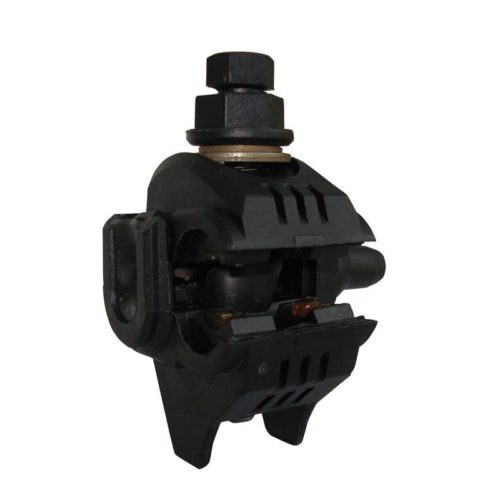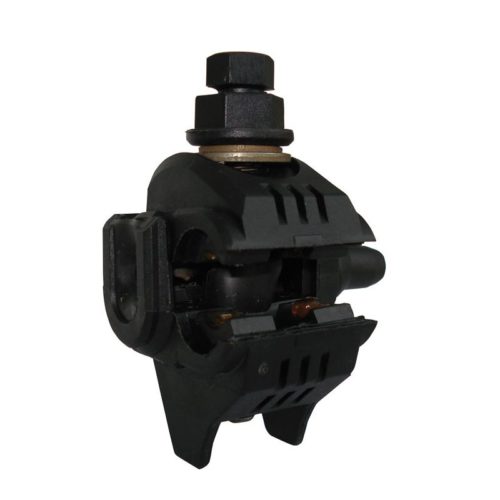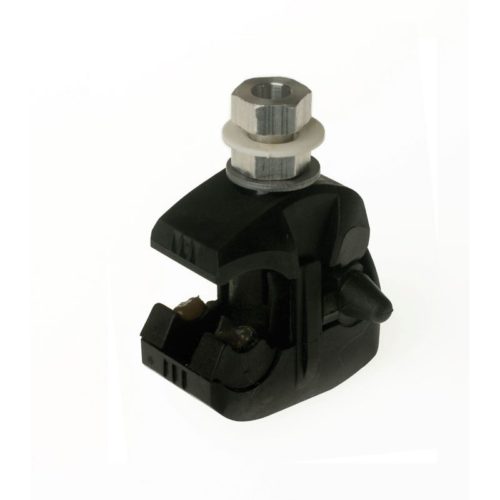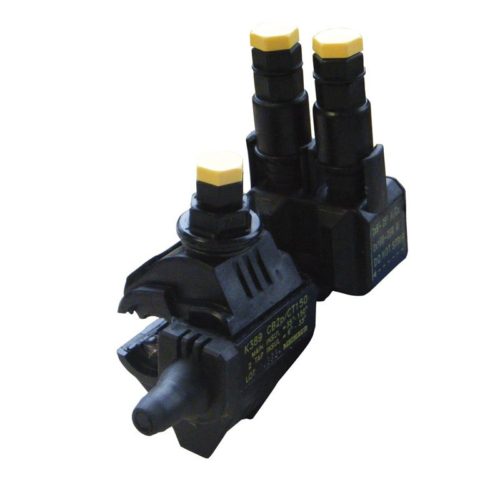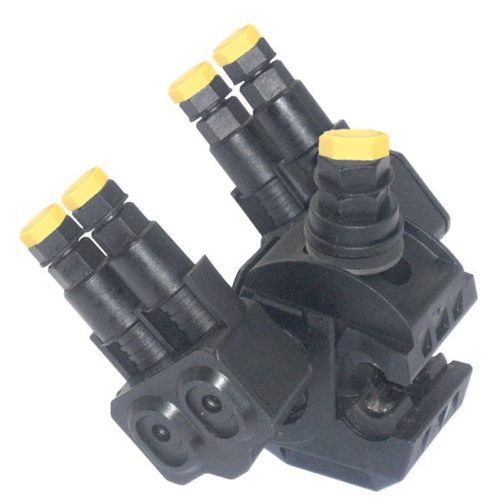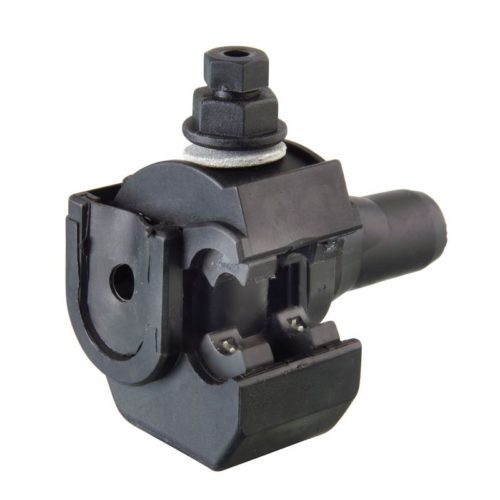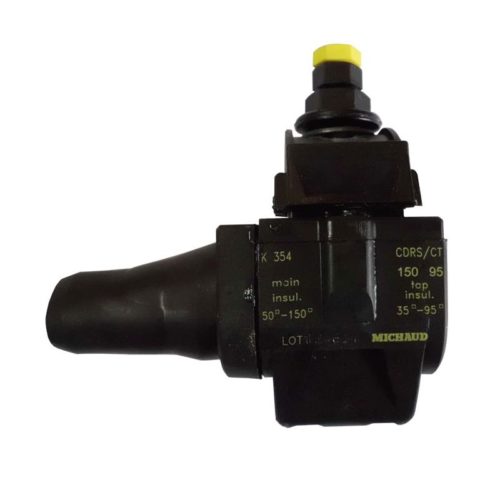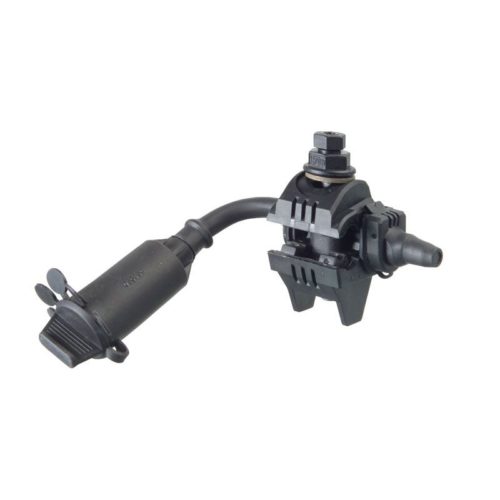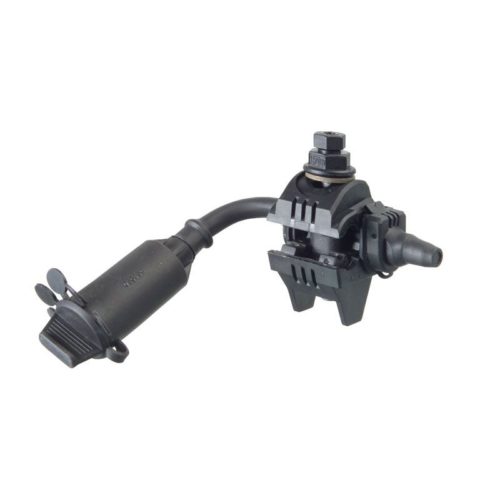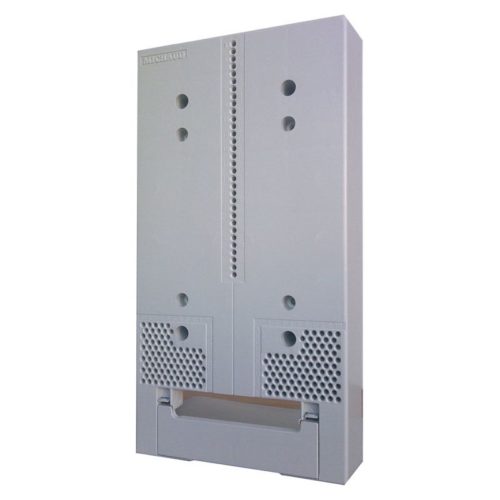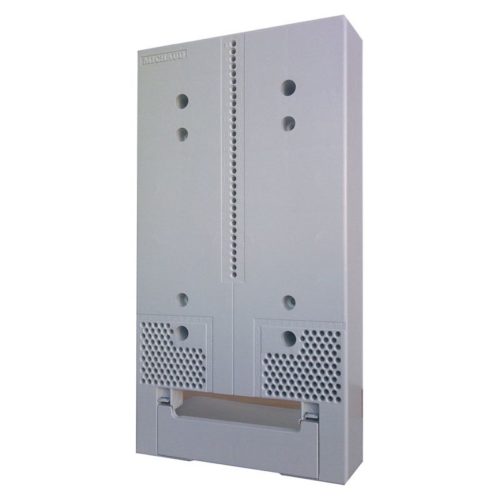-
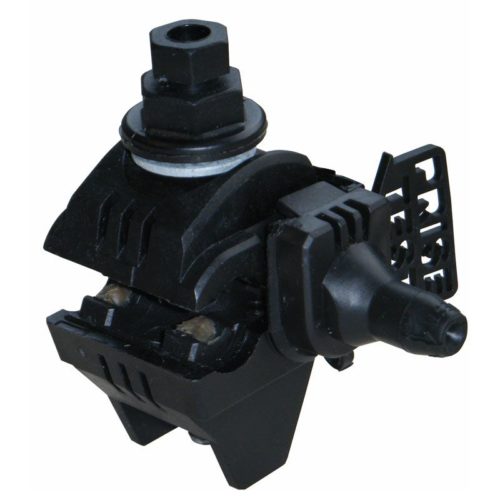
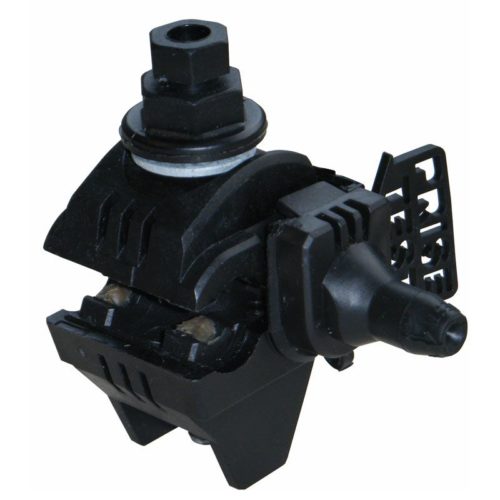 This connector is designed to connect the insulated service conductors to the low voltage A.B.C. (Aerial Bundled Conductors). It is equipped with a Test probe on the flexible sealing end cap. This enables the potential to be checked between 2 connectors installed on neutral and phase conductors and thus ensures good connection.
This connector is designed to connect the insulated service conductors to the low voltage A.B.C. (Aerial Bundled Conductors). It is equipped with a Test probe on the flexible sealing end cap. This enables the potential to be checked between 2 connectors installed on neutral and phase conductors and thus ensures good connection. -
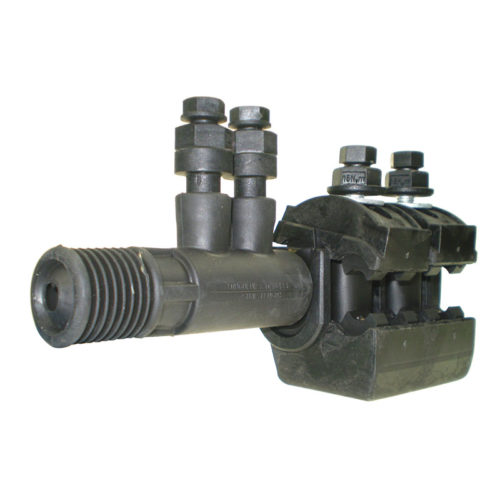
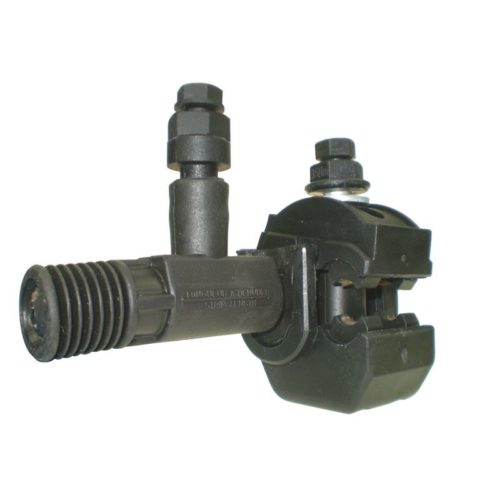 This c onnector is de signed to connect a low voltage A.B.C. (Aerial Bundled Conductors) to another network of the same type or to a low voltage aluminium alloy or copper bare conductors network. In main line, the section of the insulated conductors is from 25 to 150mm² depending on the model, and is from 7 to 120mm² on bare conductors. In tap line, the section of the insulated conductors is from 25 to 70mm² and from 35 to 150mm² depending on the model.
This c onnector is de signed to connect a low voltage A.B.C. (Aerial Bundled Conductors) to another network of the same type or to a low voltage aluminium alloy or copper bare conductors network. In main line, the section of the insulated conductors is from 25 to 150mm² depending on the model, and is from 7 to 120mm² on bare conductors. In tap line, the section of the insulated conductors is from 25 to 70mm² and from 35 to 150mm² depending on the model. -
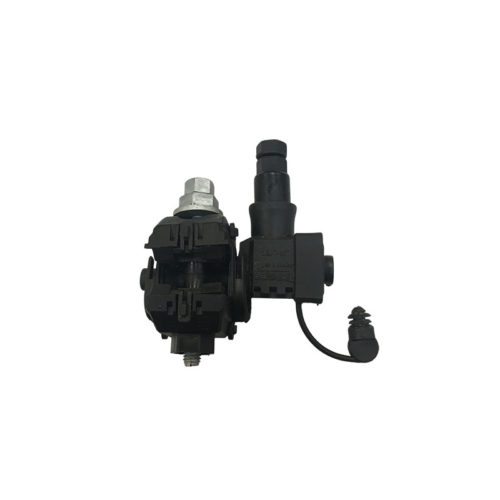
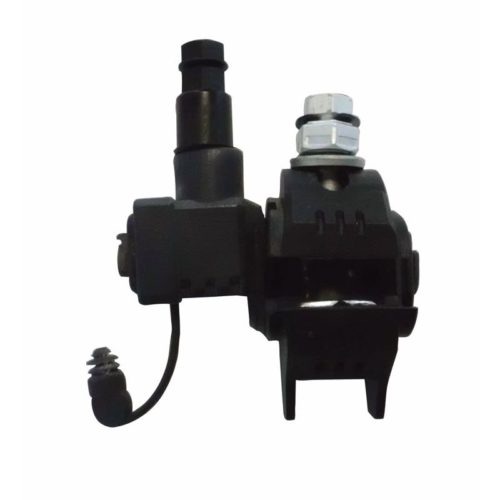 The dismountable tap contact single service connector designed to connect independently the insulated service conductors to the low voltage A.B.C. (Aerial Bundled Conductors). While connection of the main line conductor uses insulation piercing technology, that of the tap line uses stripping technology. The bare conductor service connector with independent tightening is used to connect independently the insulated service conductors to the low voltage overhead copper bare conductor network.
The dismountable tap contact single service connector designed to connect independently the insulated service conductors to the low voltage A.B.C. (Aerial Bundled Conductors). While connection of the main line conductor uses insulation piercing technology, that of the tap line uses stripping technology. The bare conductor service connector with independent tightening is used to connect independently the insulated service conductors to the low voltage overhead copper bare conductor network. -
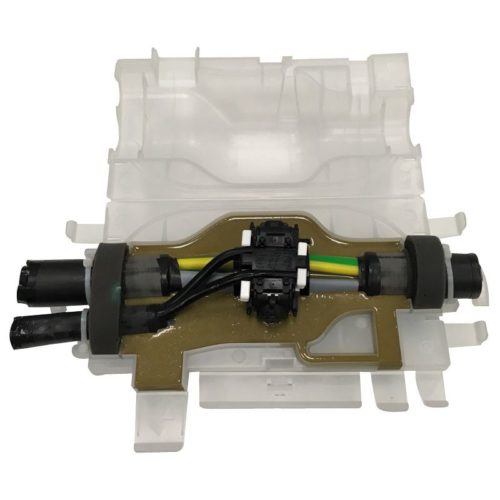
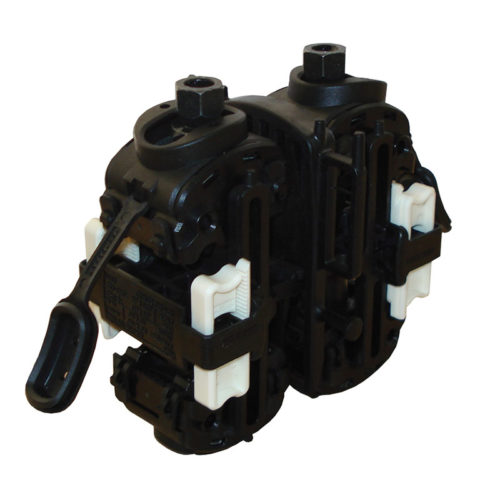 The RING connector is designed to establish a tap connection on low voltage underground networks. It is installed inside an underground box. It is used on a main cable, with synthetic insulation, of type: - Circular or sectoral, - Copper or aluminium, - Solid or stranded core. The underground box enables the tap connection from an underground network and for every conductors type (stranded, solid, multi-stranded, round or sectoral). It comprises the connector, the resin, the box and accessories according to the local standard.
The RING connector is designed to establish a tap connection on low voltage underground networks. It is installed inside an underground box. It is used on a main cable, with synthetic insulation, of type: - Circular or sectoral, - Copper or aluminium, - Solid or stranded core. The underground box enables the tap connection from an underground network and for every conductors type (stranded, solid, multi-stranded, round or sectoral). It comprises the connector, the resin, the box and accessories according to the local standard. -
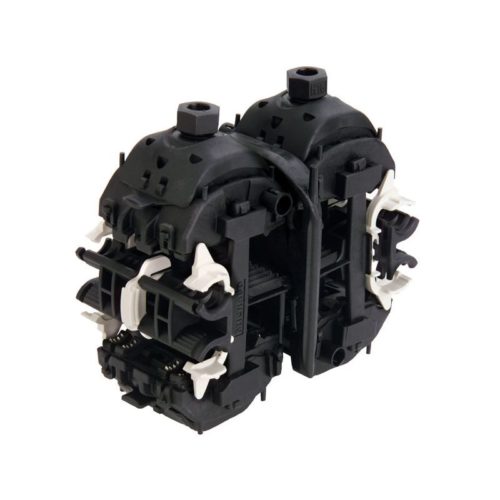 The RING connector is designed to establish a tap connection on low voltage underground networks. It is installed inside an underground box. It is used on a main cable, with synthetic insulation, of type: - Circular or sectoral, - Copper or aluminium, - Solid or stranded core. The underground box enables the tap connection from an underground network. It makes possible the tap connection of every conductors type (stranded, solid, multi-stranded, round or sectoral). It comprises the connector, the resin, the box and accessories according to the local standard.
The RING connector is designed to establish a tap connection on low voltage underground networks. It is installed inside an underground box. It is used on a main cable, with synthetic insulation, of type: - Circular or sectoral, - Copper or aluminium, - Solid or stranded core. The underground box enables the tap connection from an underground network. It makes possible the tap connection of every conductors type (stranded, solid, multi-stranded, round or sectoral). It comprises the connector, the resin, the box and accessories according to the local standard. -
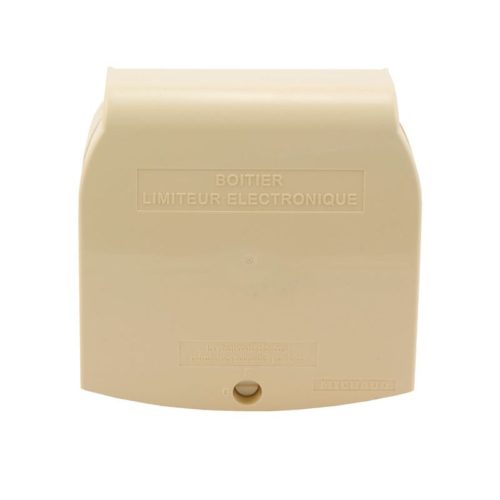
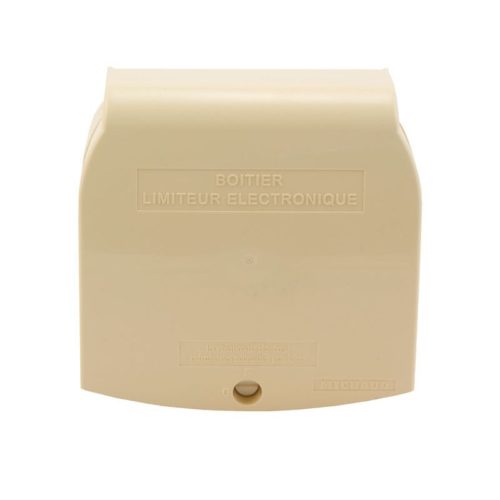 The load limiter is provided with an electronic regulator which controls intensity and manages power automatically without user/operator intervention. It is perfectly suitable for flat fee invoicing. It replaces the meter and cancels the requirement of consumption reading. The cabinet can be installed at the top of the pole or on the outside facade with the help of screws and strap. The cabinet resists to UV and to water or insect penetration (IP34D). Its cover closing can be sealed providing an excellent fraud protection. This cabinet limiter can receive a single phase connection with 2.5-16mm² cable sections.
The load limiter is provided with an electronic regulator which controls intensity and manages power automatically without user/operator intervention. It is perfectly suitable for flat fee invoicing. It replaces the meter and cancels the requirement of consumption reading. The cabinet can be installed at the top of the pole or on the outside facade with the help of screws and strap. The cabinet resists to UV and to water or insect penetration (IP34D). Its cover closing can be sealed providing an excellent fraud protection. This cabinet limiter can receive a single phase connection with 2.5-16mm² cable sections.
